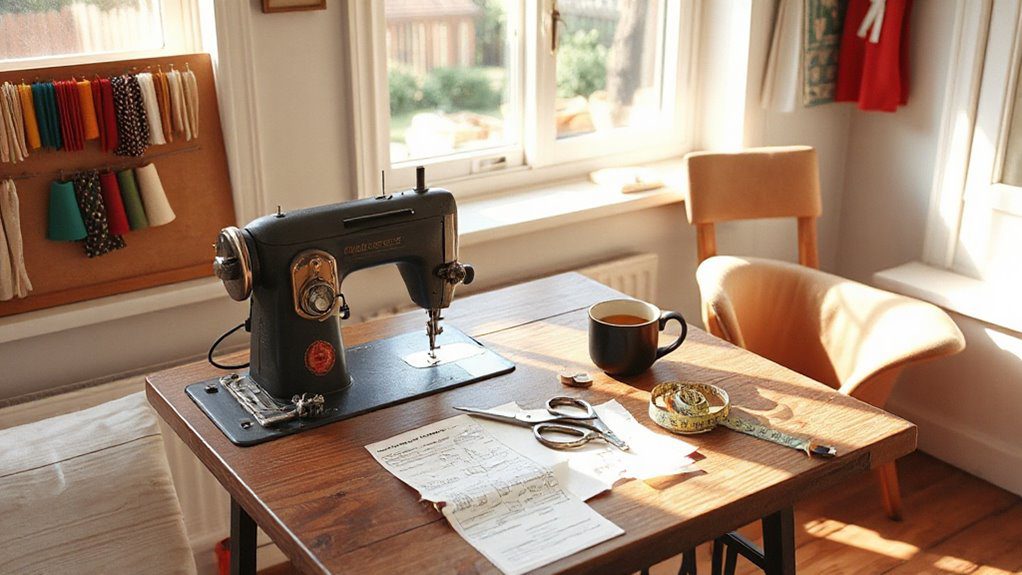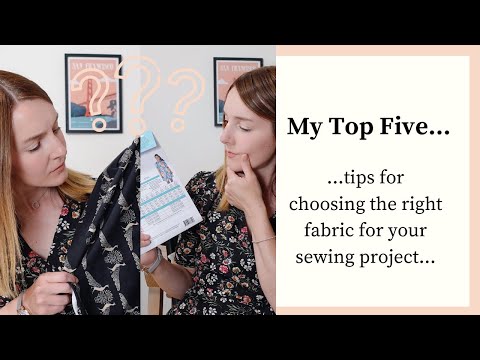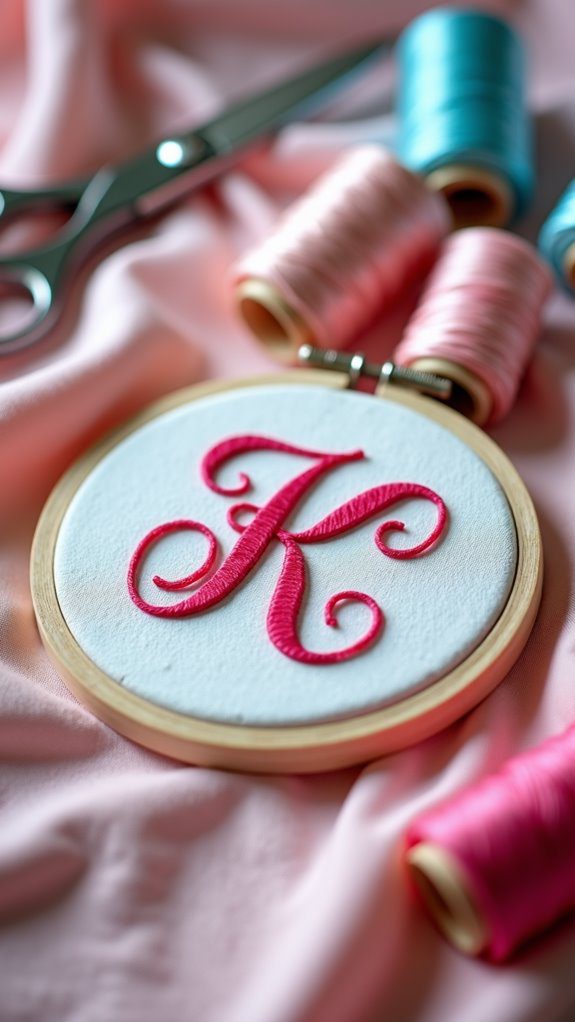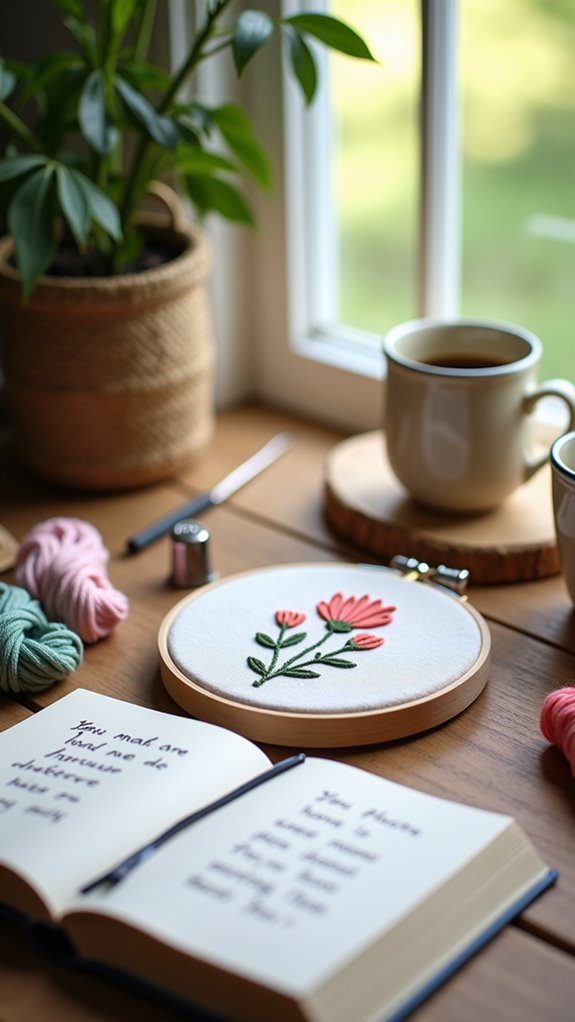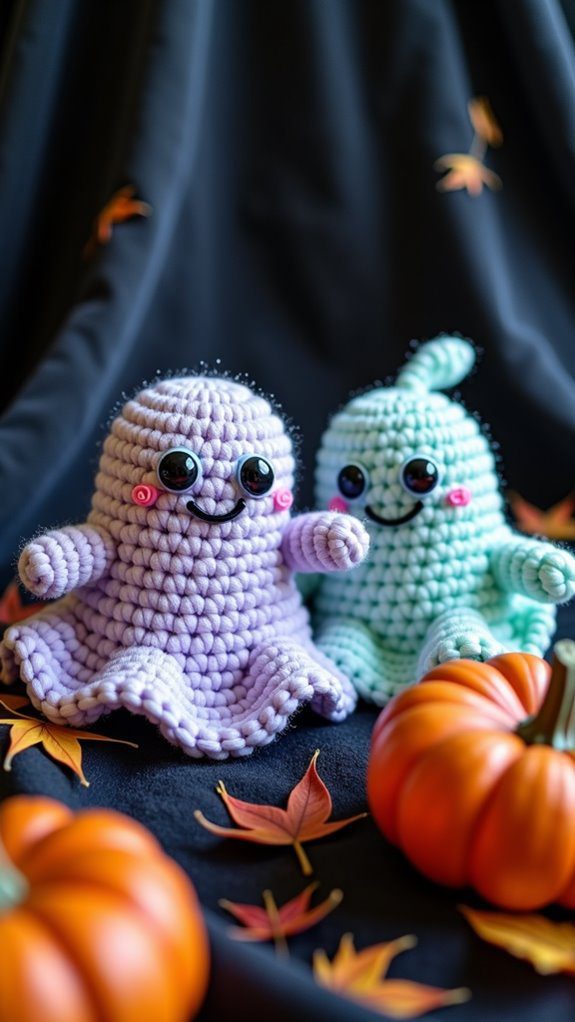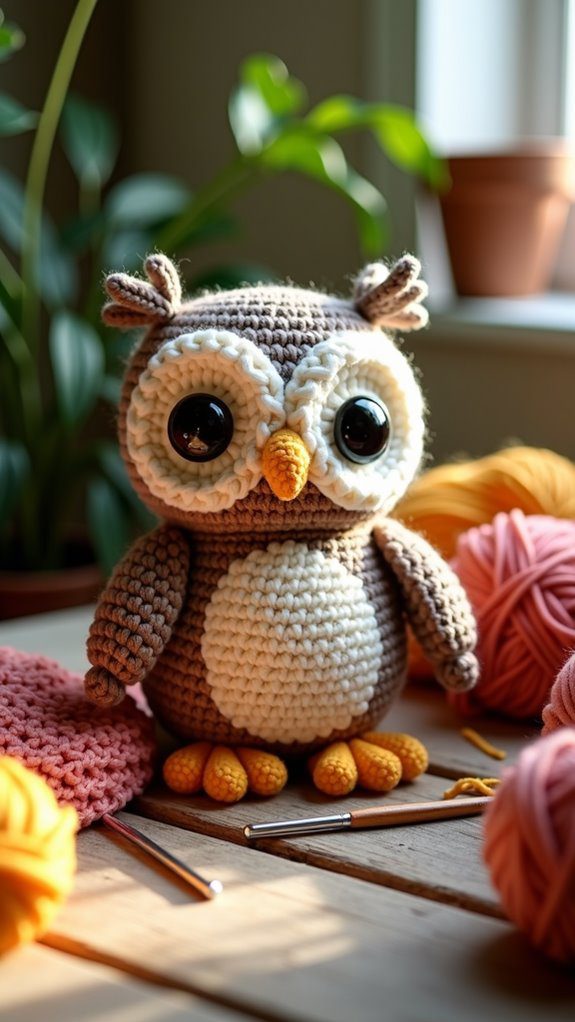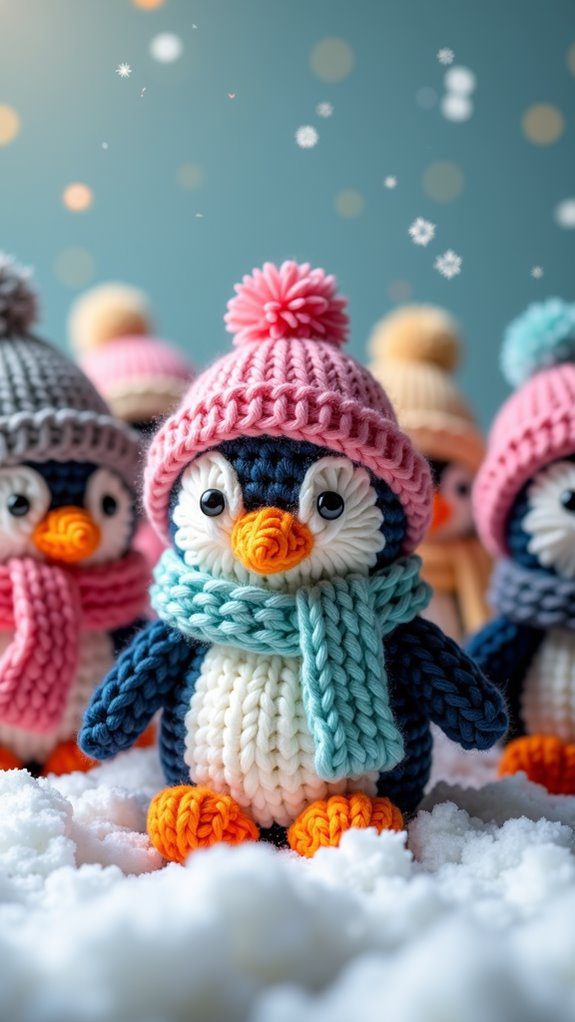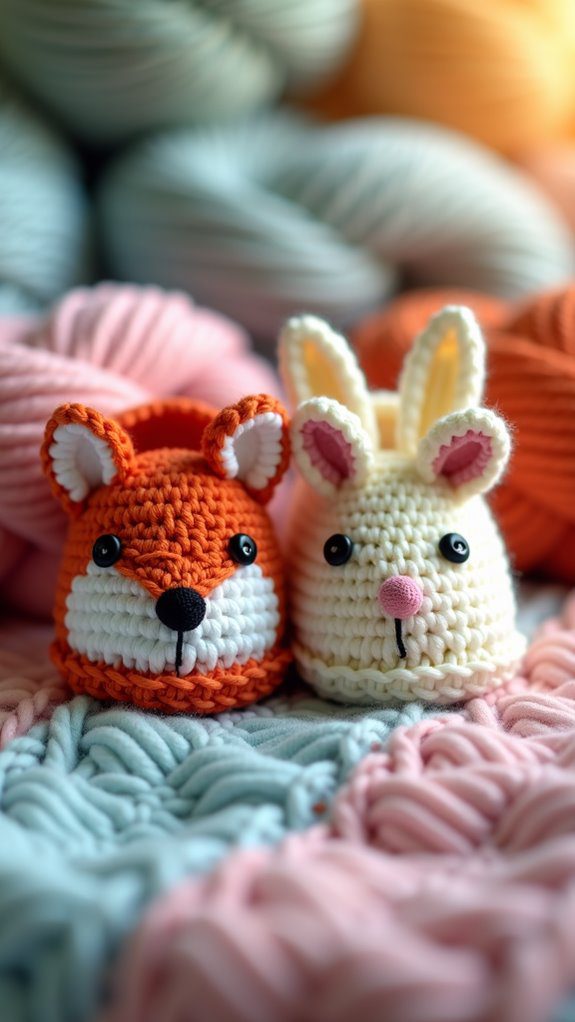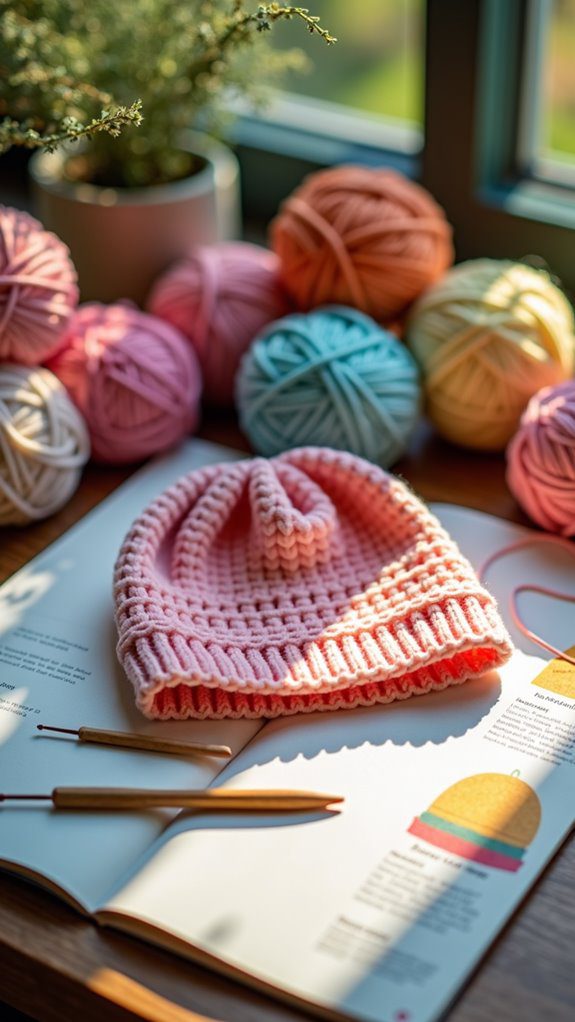Starting to sew your own clothes is such an exciting adventure! First, pick a beginner-friendly pattern that you love (boxy tops are great!). Then, take accurate measurements to guarantee a perfect fit—don’t forget to jot them down! Choose woven fabrics like cotton for ease, and wash them before cutting. Gather essential tools like a good sewing machine and reliable scissors. Once you’re ready to sew, you’ll create unique pieces that showcase your style and creativity. There’s so much more to explore!
Key Takeaways
- Choose beginner-friendly patterns, like boxy tops or skirts, and ensure they come with clear instructions for easier sewing.
- Take accurate measurements of your chest, waist, and hips, and compare them to the pattern sizing chart for the best fit.
- Select woven fabrics such as cotton or linen for their ease of use and breathability, pre-washing them to prevent shrinkage.
- Prepare your fabric by washing and pressing it, then carefully cut out pattern pieces while ensuring proper grainline alignment.
- Gather essential sewing tools including a reliable sewing machine, high-quality scissors, a measuring tape, and a seam ripper for corrections.
Choose Your Pattern
When you think about sewing your own clothes, how do you decide which pattern to choose? Start by exploring beginner-friendly patterns like a boxy top or a simple skirt, especially from indie companies like 100 Acts of Sewing or Grainline Studios.
Look at your wardrobe—what do you love wearing? This can inspire your choice and guarantee it reflects your personal style.
Don’t forget to consult the pattern sizing chart, making adjustments on tracing paper if needed. Choose patterns that offer clear instructions, making your sewing journey enjoyable and successful.
Also, consider the fabric type; woven fabrics are more forgiving for beginners than knits. With the right pattern, you’ll feel proud of creating something uniquely yours!
Take Accurate Measurements
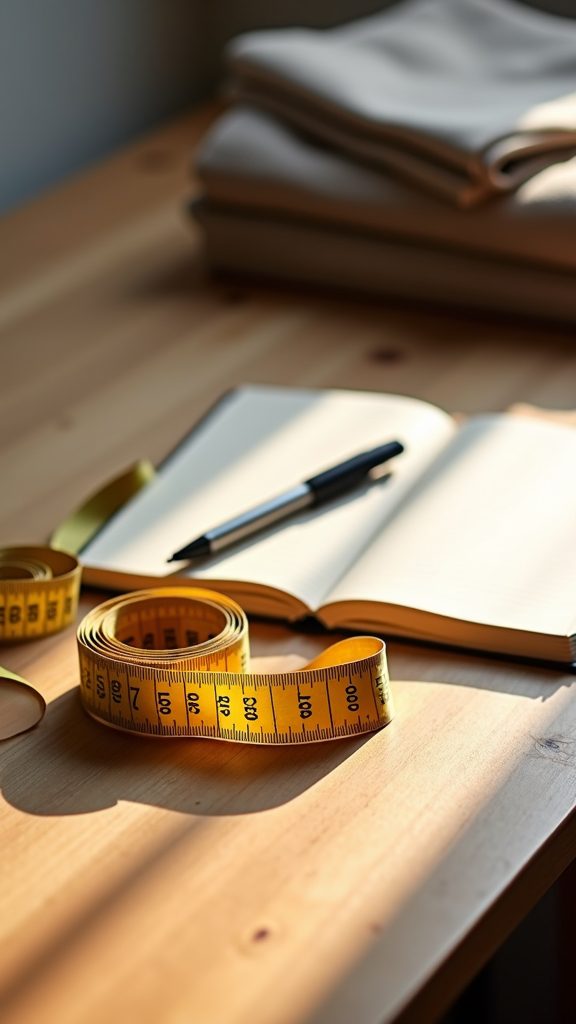
Taking accurate measurements is an essential step that can make or break your garment-making experience.
Grab a soft measuring tape and measure your chest, waist, and hips at their fullest points for the most accurate body measurements. Once you have those numbers, compare them with the sizing chart of your pattern.
If you notice discrepancies, don’t worry! You can use tracing paper to make necessary adjustments. Remember to keep the tape snug but not tight and stand naturally for the best results.
Jot everything down in a handy notebook—this will help you refine your skills for future sewing projects. With these steps, you’re well on your way to creating something truly special that fits you perfectly!
Select the Right Fabric
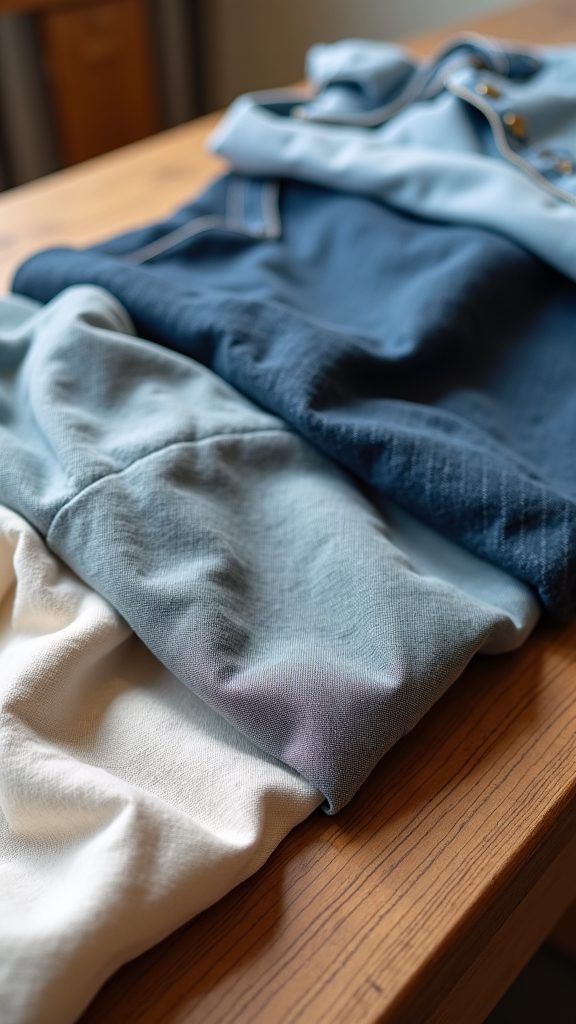
Selecting the right fabric is like choosing the perfect canvas for your masterpiece; it can truly elevate your sewing project!
Start by opting for woven fabrics like cotton or linen. They’re more forgiving and easier to work with than knits, especially for beginners. When considering weight, lightweight options like cotton batiste are great for summer, while medium-weight chambray works year-round.
Always wash your fabric before cutting to avoid shrinkage and distortion. Natural fibers like cotton and linen breathe beautifully, while polyester blends offer durability and easy care.
Don’t forget to explore online fabric stores that let you order swatches—feeling the texture helps confirm it meets your project needs.
Happy sewing, and enjoy every stitch!
Prepare and Cut Your Fabric
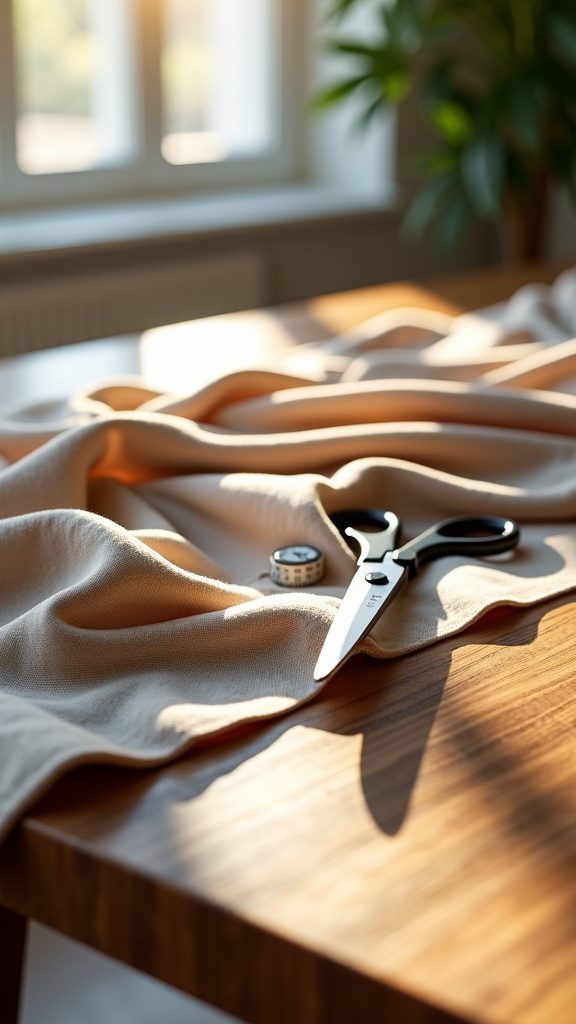
Ready to plunge into the exciting world of preparing and cutting your fabric? This step is vital for your sewing success!
Start by washing and pressing your fabric to prevent shrinkage, guaranteeing a smooth surface. Then, fold it carefully for symmetry when laying out your pattern. Pay attention to the grainline arrow; it’s essential for that perfect drape.
Here are three quick tips to keep in mind:
- Use pattern weights or pins to secure your pattern on the fabric.
- Trace around the pattern pieces before cutting to guarantee accuracy.
- Double-check your fabric print placement and document any adjustments needed.
With these steps, you’re on your way to creating something truly beautiful. Enjoy the process; it’s part of the joy of sewing!
Gather Your Sewing Tools
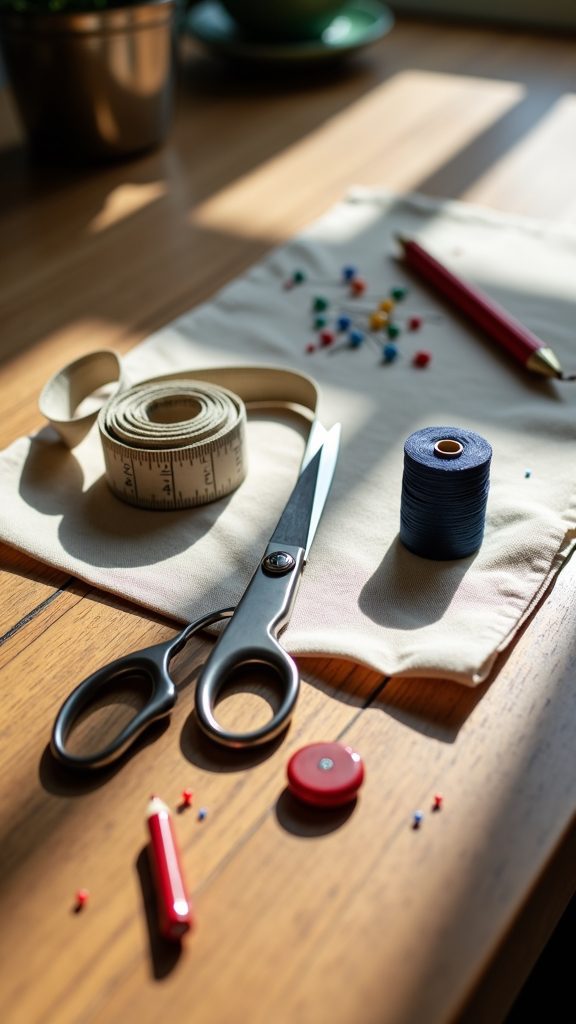
Gathering your sewing tools is like assembling a treasure chest for your creative journey!
Start with a reliable sewing machine, perfect for beginner sewing, that offers both straight and zig-zag stitch options. High-quality scissors, like Gingher shears, are essential for precise cuts. Don’t forget your measuring tape to guarantee everything fits just right!
A seam ripper is your best friend for correcting mistakes, while a sewing kit stocked with fabric chalk and cotton thread will make your projects shine. Aim for universal polyester thread in various colors—one 100-meter spool is usually enough for each garment.
With these tools in hand, you’ll feel empowered and ready to plunge into the wonderful world of sewing!
Start Sewing Your Garment
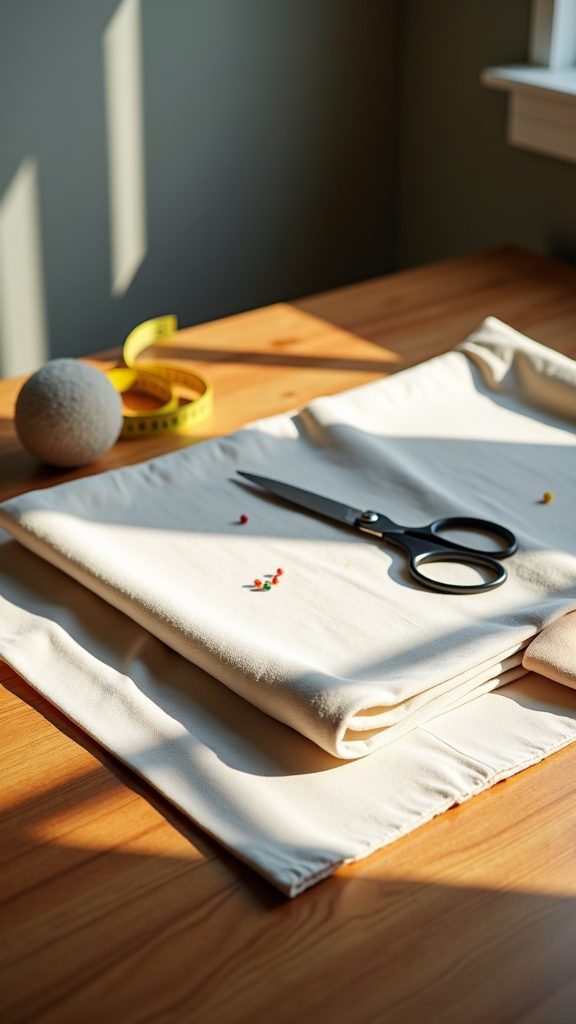
Plunge into the exciting world of sewing your garment, and you’ll quickly discover the joy of bringing your creative vision to life!
Start sewing by selecting a beginner-friendly pattern, like a boxy top or simple skirt. Make sure to take accurate measurements using your measuring tape and compare them to the pattern sizing.
Here’s what to focus on:
- Fold your fabric in half, ensuring the right sides are together.
- Pin your pattern pieces to the fabric, keeping in mind the seam allowance and grainline.
- Carefully cut out fabric, following the pattern instructions to set a solid foundation for your creation.
With your essential tools ready, you’re just moments away from your first stitch!
Enjoy every step of learning how to sew!
Finish and Refine Your Creation
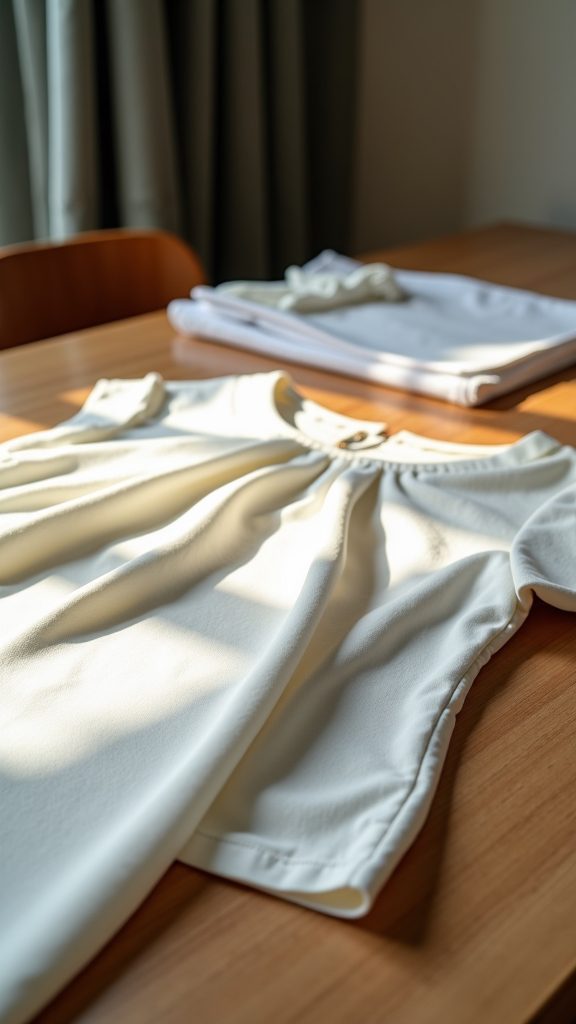
Now that you’ve stitched together your garment, it’s time to finish and refine your creation, and let me tell you, this is where the magic really happens!
Start by using techniques like a serger or pinking shears to prevent those pesky fabric frays and make your seams durable. Properly pressing your seams with a steam iron will give your garment that crisp, professional finish.
Don’t forget to add facings or bias tape to the necklines and armholes—they’ll keep everything polished! When it comes to the hem, consider hand-stitching or using a blind hem stitch for a neater look.
Finally, give your masterpiece a final press to guarantee every detail shines. You’re almost ready to wear it with pride!


